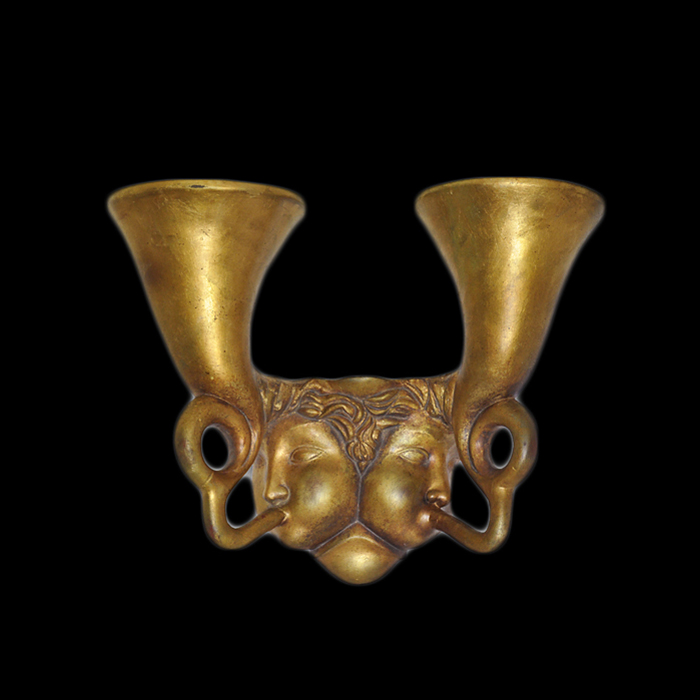
Vadim Androusov was born in 1895 in Saint Petersburg. His father was a geologist, a prominent member of the Saint Petersburg Academy of Sciences, and his grandfather was the archeologist Heinrich Schliemann, known for discovering the cities of Troy and Mycenae. He spent part of his childhood between Estonia and Ukraine before returning to Russia in 1912.
From the age of twelve, Androusov began working with clay while continuing his education. In 1920, after the war of 1914-1918, he arrived in France and attended classes at “La Grande Chaumière” in Paris, where one of his teachers was Bourdelle. His first sculptures date back to 1925 and depict female figures, busts, riders, or characters inspired by Antiquity; his work shows his interest for classicism.
Rather than using bronze extensively, Androusov preferred terracotta, plaster wood, ivory, ceramics or stone. He exhibited his creations at the “Salon des Tuileries” and “Salon des Indépendants”.
In addition to his sculpting activity, he collaborated with decorators with decorators and created wall sconces, furniture handles or door entries. All through the 1930s, 1940s, and 1950s, his mermaids, heads of Medusa, ancient-style masks or lions embellish the neoclassical pieces created by André Arbus or Jean Pascaud. Androusov’s bronzes deftly enrich Arbus’s furniture; so a Medusa mask served as a clasp on the doors of a dresser, and busts of women support the backrest or armrest of a chair.
During the 1960s, he created bas-reliefs and stone sculptures representing subjects such as poetry, studies, music and sciences for various public buildings and schools. He designed and executed the models within his Parisian workshop
Androusov passed away in Paris in 1975.